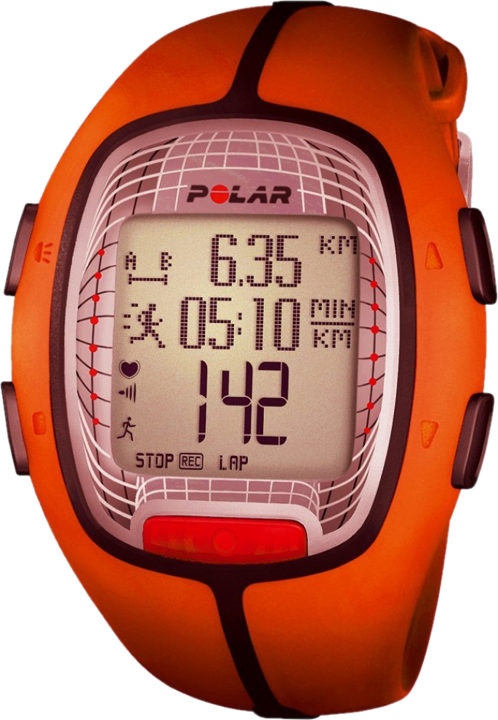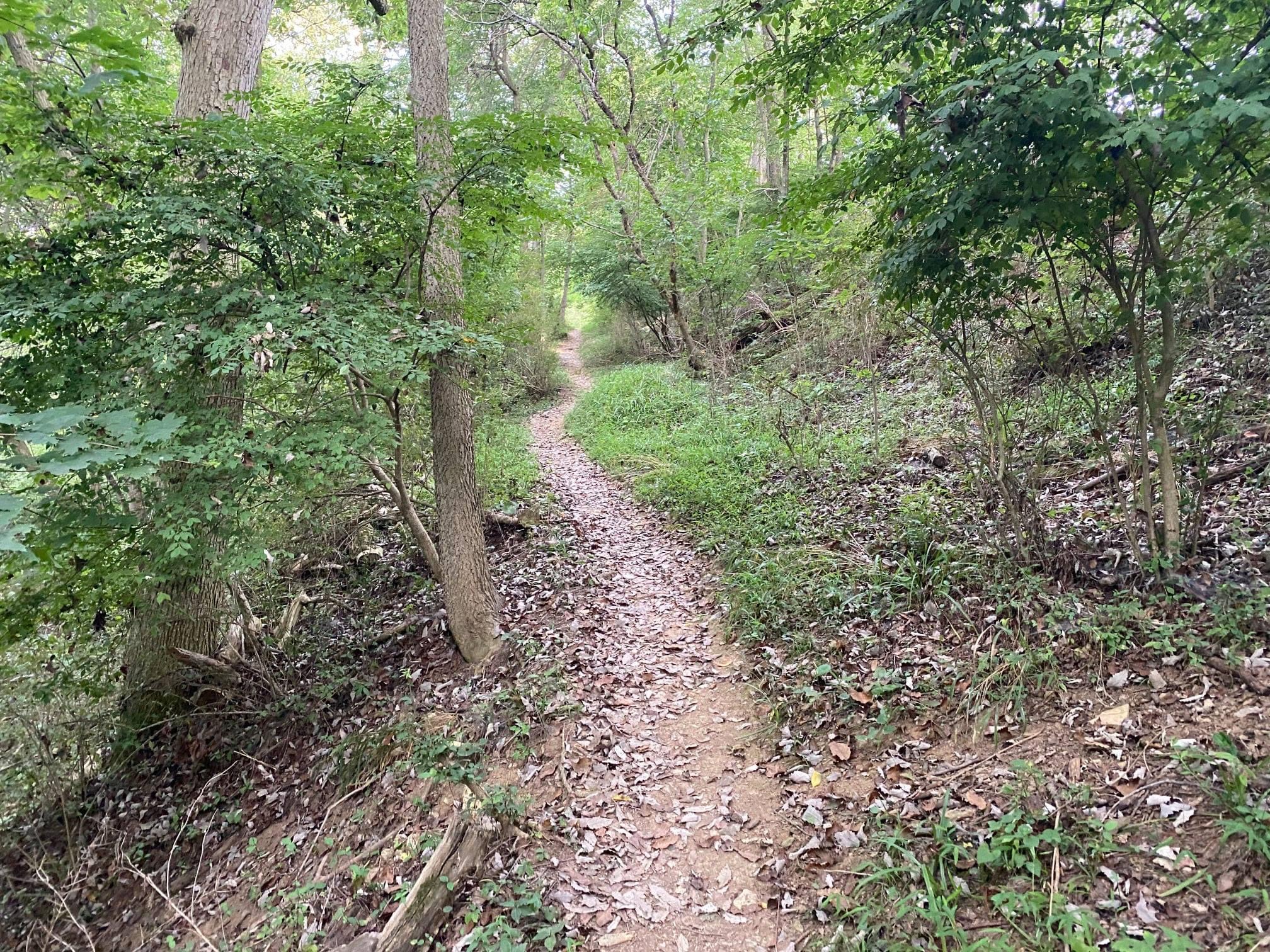
Periodically I like to see how long it takes me to oxidize 1,000 calories in a cardio session.
A lot of fitness experts point out that the calorie counting gauges on commercially available heart rate monitors are guesstimates at best and inaccurate compared to laboratory analysis of caloric expenditure during exercise. Point taken" on the other hand, the heart rate monitor is accurate unto itself. Once a caloric benchmark is created, using the same instrument will provide the user a valid frame of reference for future efforts. In addition, the truism that commercial heart rate monitors are inaccurate subliminally infers that they overestimate the amount of calories oxidized in relation to the amount of work performed - who is to say that they might actually underestimate the number of calories oxidized? Regardless if the instrument overestimates or underestimates the actual number, calories burning provides a numerical frame of reference that I use often.
On this particular day I hit the farm at 8am; I weighed 203 pounds. The temperature was 31 degrees. I started the session off with 50 jumping jacks to elevate my placid heart rate. Rolling out of the Jeep and after two cups of coffee, I started off at 76 beats per minute (BPM). I never eat food before my early morning cardio session as I want to operate in a low glycogen state and create a body fat oxidizing "window of opportunity." After the jumping jacks I performed 20 deep squats to loosen up my knees, hip joints and ankles. I glanced at my watch: 112 BPM. I fired up the "shuttle function" of my Spotify and began an easy run on the flat section of the farm. The trails were littered with autumn foliage and the scenery was surreally beautiful.

I was able to spike my heart up to 145 BPM within the first six minutes of my jog/sprint. I increased my speed as I felt my body coming awake. I run on a large circular path enclosed in forest canopy that takes three minutes to circumnavigate. By the end of two laps, six minutes, I am able to spring at roughly 90% of my all out spring speed maximum. I then hit what I call the "second leg" of the farm trek; a long stretch that runs along the trout stream I fish in from April to October. This section winds and twists yet remains level. By the time I finish this section my watch indicates I've been going for 30 minutes and was maintaining a consistent 130+ BPM.
These flat sections are ideal for interval sprinting and I would blast hard for 10-15 seconds, spike to 150+ BPM then ease off the accelerator. My body and heart, fully awake, sucked in the crisp cold super-oxygenated air. I felt alive and vibrant. I rolled into the third leg, a series of steep mountain trails that wind and twist upward. These Bill Goat trails require attention and care; one missed footfall and you will tumble down 100 feet into the trout stream. Normally I will run these steep trails, but today my goal was different. I wanted to extend the duration of the session as much as possible without dipping below 130 BPM.
In order to stretch the duration I power walked up these steep trails and had not problem keeping my heart rate at 140+. The grade is so severe that simply walking as fast as possible, combined with high arm swings enables me to keep my heart rate effortlessly elevated. This is a Dr. Len Schwartz HeavyHands tactic - see post below. The work seemed "easier" than leg-intense sprinting on the level surfaces and my leg muscles actually recovered during this power walking phase. After walking as fast as possible up the mountain trail section, I emptied in a cornfield set on a high plateau.
I continue up yet another grade, skirting the perimeter of the field, reduced to corn stalks after the October harvest, though not as steep as the previous Billy Goat section, the corn field circumnavigation was steady uphill for another half mile. By the time I crested out my heart rate is 150+ purely by power walking. I hit the 50 minute mark. In the past I have had problems keeping my heart rate elevated while traveling downhill. There is always a downside to traveling upward in the mountains. Heading up I might hit 170+ BPM but after cresting, heading down seemed a cardiovascular waste of time. I couldn't find a safe way to keep my heart rate from plummeting during the downhill phase.
I cured this problem by expropriating some tactics from Len's Whole Body fitness approach. Len uses "isotonometrics" to elevate the heart. He discovered that by pushing and pulling on the hands while walking or jogging a significant bump in the heart rate occurred. I use a modified version of his system. While walking, or carefully jogging down hill, I push the two hands together or pull them apart, creating muscular tension. This procedure allows me to continue to keep my heart rate elevated. In downhill sections normally my heart rate nosedives from 140 to 105. I discovered that by using a serious of "hand-clasps that pit half the body against the other half," to quote Len, I could keep my heart elevated in the 125 to 135 zone.
I used to stop and do a series of jumping jacks, squats or pushups to spike the heart, but found these free hand exercises lacking. While the heart rate would spike in the immediate aftermath, the moment I stopped doing the jumping jacks and started heading downhill my heart rate plummeted - as it does will all good athletes who are in good physical condition. On the other hand by pushing my two hands together, by curling one arm up as I pushed downward onto a triceps countermove, I created tension. By pitting one arm against the other, I could continually keep the heart rate jacked up as I walked or jogged. My heart rate can easily spike 10-25 beats over what it would be with the isotonometric push-pull protocol.
By continually referring to the monitor, I access the effectiveness of the push-pull movement and determine what impact it is having on the heart rate in real time. Here are four rudimentary isotonometric exercises I have devised: again, as long as the hear rate elevates, the type of pattern you select is of secondary importance.
Create your own procedures. As long as the push-pull pattern you invent spikes the heart it is valid. In most isotonometric push-pulls, one hand must "win." If you pushed or pulled with absolutely equal force the arms would remain static in a deadlocked isometric. Allow one muscle to ever so slightly overpower the opposing muscle. Then, at the turn around, reverse roles: allow the opposing muscle to ever so slightly with the push or pull back.


The possibilities are endless. Continually refer to the heart rate monitor to see which point/counterpoint isotonometrics are working and which ones are ineffectual. On one familiar downhill stretch I would have to walk or jog dangerously fast to maintain a paltry 115 BPM. By using this method I was able to actually slow my walk pace yet generate a 135 heart rate! Isotonometrics rectifies the Achilles Hell of walking. This is another valid arrow for the cardio quiver.
Coming off the extended downhill section and heading up and around the barn, I noted that I had burned 850 calories. I headed back to my Jeep. I timed it so that as I popped out of the woods I had oxidized 990 calories. I flipped the watch to stop at exactly 1,000.
My stats were as follows:
Far from fatigued, I felt invigorated and went straight to the unheated gym and worked my arms for another 30 minutes. By the way, I averaged 122 beats per minute for the lifting session and oxidized an additional 230 calories; all in all, a good day's work.
If you own a heart rate monitor with a calorie counting function periodically see how long it takes you to burn 250 or 500 calories. Have caloric burn records. See how long it takes to burn X number of calories: establish burn benchmarks and see to better these periodically. Those in better shape can go for the big numbers. Think of calorie oxidation records as another way to inject fun into the cardio equation. Sometimes it's nice to just forget about everything other than "How fast can I burn 500 calories?"
Learn more about other cardio strategies below. Mixing modes gives great variety. In The "Maximize Cardio Intensity" post we give concrete examples of how to periodize cardio activity using creeping incrementalism to make small successful gains every week. The "Fan Bike Protocols" post discusses how to utilize the fan bike for winter cardio when trails are frozen over. Fight cardio stagnation by changing things up.
Learn more about our training philosophy check out our Progressive Resistance Training Resource Page. Join the community sign up below to our newsletter and receive our FREE Planning and Periodization Guide. Please feel free to send us a question here or leave a comment below.
Want the inside training scoop?
Join The Community
Our email content is full of value, void of hype, never pushy, and always free. As a BONUS you will receive our FREE planning & periodization template to help you with your training goals.




